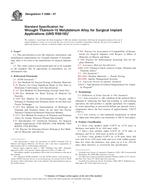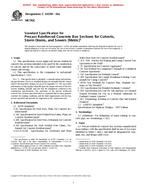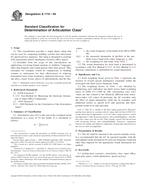1.1 This test method covers the determination of the flash point of petroleum products in the temperature range from 40 to 360oC by a manual Pensky-Martens closed-cup apparatus or an automated Pensky-Martens closed-cup apparatus.
Note 1 – Flash point determination as above 250oC can be performed, however, the precisions have not been determined above this temperature. For residual fuels, precisions have not been determined for flash points above 100oC.
1.2 Procedure A is applicable to distillate fuels (diesel, kerosene, heating oil, turbine fuels), new lubricating oils, and other homogeneous petroleum liquids not included in the scope of Procedure B.
1.3 Procedure B is applicable to residual fuel oils, cutback residua, used lubricating oils, mixtures of petroleum liquids with solids, petroleum liquids that tend to form a surface film under test conditions, or are petroleum liquids of such kinematic viscosity that they are not uniformly heated under the stirring and heating conditions of Procedure A.
Note 2–Liquids having kinematic viscosities less than 5.5 mm 2/s (cSt) at 40oC (104oF), do not contain suspended solids, or do not have a tendency to form a surface film while under test conditions, can be tested in accordance with Test Method D56.
1.4 This test method is applicable for the detection of contamination of relatively nonvolatile or nonflammable materials with volatile or flammable materials.
1.5 The values stated in SI units shall be regarded as the standard. The values given in parentheses are provided for information only.
1.6 This standard does not purport to address all of the safety concerns, if any, associated with its use. It is the responsibility of the user of this standard to establish appropriate safety and health practices and determine the applicability of regulatory limitations prior to use. For specific hazards statements, see 6.4, 7.1, 9.3, 9.4, 11.1.2, 11.1.4, and 12.1.2
Product Details
- Published:
- 06/10/2002
- Number of Pages:
- 17
- File Size:
- 1 file , 200 KB


